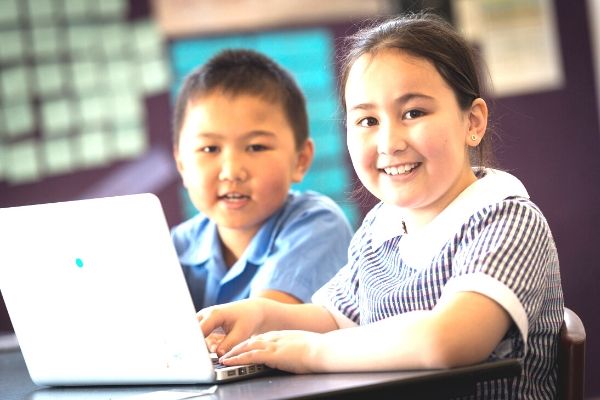 It’s okay not to have all the answers at St Mel’s Catholic Primary School Campsie, which has received a second accolade that places it among Australia’s most innovative schools.
It’s okay not to have all the answers at St Mel’s Catholic Primary School Campsie, which has received a second accolade that places it among Australia’s most innovative schools.
Principal Steve Borthwick said he was humbled to make The Educator’s annual list of Australia’s 40 most innovative schools for the second year in a row. Like the first, their 2018 award was given for an aspect of the school’s Organic Learning Cycle, which allows students and teachers to make their learning visible and open to constructive feedback.
You have to be honest with yourself … in order to grow.
The cycle’s competency rubric gets students in Years 3 to 6 to evaluate their level of knowledge at the beginning and end of each topic they study and share this with their peers and teacher. The process makes it clear to students that learning is a journey.
“The less stigma there is to failing, the greater the confidence students will have in their learning,” Mr Borthwick said. “The rubric helps students understand that if we don’t ever take learning risks we may never really achieve what we are capable of.
“Self-awareness and awareness of others is critical to effective social interaction and our capacity to collaborate successfully with peers.
“At the end of the day we want all learners – students and teachers – to take full responsibility for their learning and not rely on being told what or how to learn, which traditionally is how classrooms and schools operated.”
Teachers currently use the rubric for skill-based subjects including Mathematics, English, Science, and Geography, but it can be used for any type of learning.
If we don’t ever take learning risks we may never really achieve what we are capable of.
Year 6 students Alyssa and Zebelle have found the Organic Learning Cycle especially useful in Mathematics, where they are currently studying data. They are now adapting the competency rubric for students in Kindergarten to Year 2 to use.
“Since the very first time we used the rubric I’ve developed and realised no one is going to judge you based on what you need improvement on,” Alyssa said. “You have to be honest with yourself and have an open mindset in order to grow.”
Zybelle said the visibility of the rubric allowed students to know where to find peer support for their learning.
“We usually start by looking at the syllabus as a class, so we all know what the intended outcomes are and whether we are able to do them,” she said. “That determines what place we are on the competency rubric. If others know how to do something that I don’t know how to do, I know I can go to them and ask for help.”
